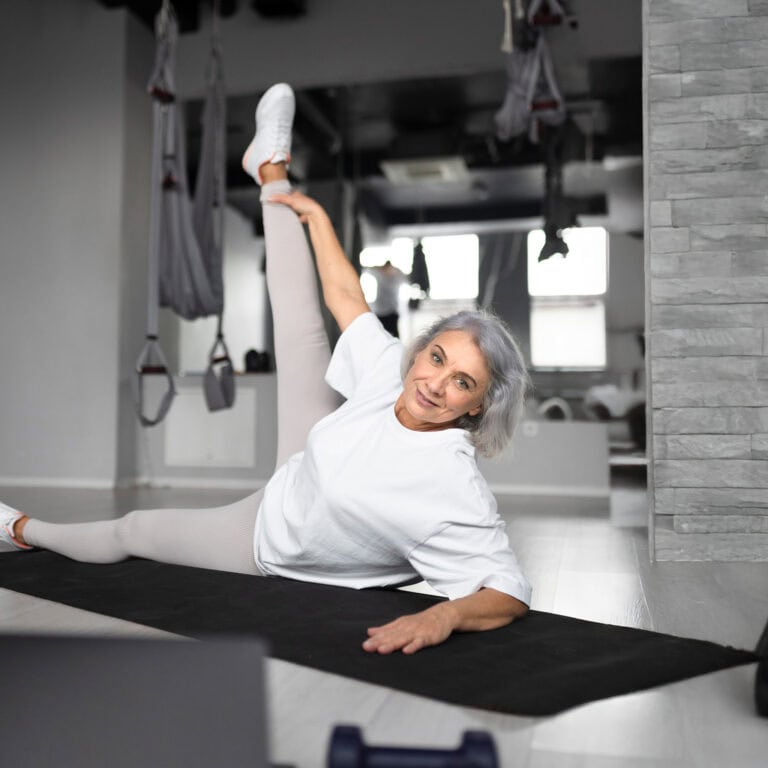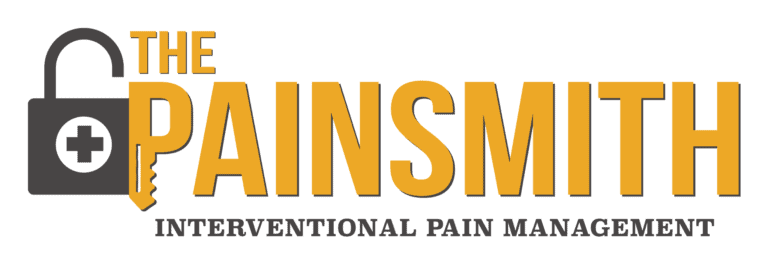Unfortunately, most seniors will experience knee pain at some point in their lives. It is commonly caused by acute injuries or osteoarthritis (inflammation of the joint). Meniscus (the cartilage in your knee) tears are also common. They can happen when you forcefully twist or rotate your knee, especially when you’re putting your full weight on it. In addition, just carrying around extra weight and the general wear and tear on your joints that comes with aging can also contribute to knee pain.
Some knee pain will go away on its own within a few weeks with conservative treatment such as rest, ice/heat, elevation, and OTC pain medication. If your knee pain lasts for longer than a few weeks, becomes significantly more painful, or starts to interfere with your daily life, you may need to see a specialist. Your primary care provider, an orthopedic surgeon, a physiatrist (physical medicine and rehabilitation specialist) or a sports medicine physician can all help diagnose the cause of your knee pain and design a treatment plan. Treatments will depend on the cause of the pain, but most knee pain responds to a combination of physical therapy, steroid injections, compression sleeves or braces and rest.
However, there are also ways for seniors to prevent, reduce, or manage their knee pain before it becomes chronic. A regular exercise routine can help strengthen the knee joints and surrounding leg, hip and buttocks muscles that support them.

NOTE: Before attempting any new exercise routine, check with your healthcare provider.
Best senior exercises for knee pain
A comprehensive exercise program should combine both cardiovascular endurance exercises and exercises to improve your flexibility and strength. Start your routine with a 20-30 minute cardio warm-up, then 2-3 rounds of leg strengthening exercises. As you improve your strength and endurance, you can gradually increase your repetitions, add weights, or modify the difficulty of the exercises to continue your fitness journey.
Best Cardio Exercises for Knee Pain
- Walking: One of the simplest and most effective low-impact exercises is walking. Try taking a daily walk around your neighborhood or park. You can start with 20-30 minutes, and increase your time as your stamina improves.
- Swimming: An ideal low-impact exercise is swimming. The buoyancy takes the pressure off your joints, and the resistance can help maintain or build muscle tone. Swimming laps is one of the best full-body exercises you can do.
- Stationary Bike / Bike Riding: Riding a stationary bike is a great way to get some low-impact cardio. A stationary bike can provide you with the benefits of cycling with less potential for injury due to road hazards. You can start with 10-20 minutes daily and gradually increase your time or resistance. If you feel you’re up to the challenge of a longer outdoor ride, you can try out a slow speed bike ride on an even surface.
Best Strengthening Exercises for Knee Pain
Knee Raises / Marching in Place
- Stand straight in the middle of a room, or while holding onto a stationary object for balance.
- Bring your knees up one at a time to the highest comfortable height you can, then bring them back down.
- Go as slow at you need to, and gradually increase your speed as you are able to.
- You can swing your arms as you raise your knees, or hold them out straight for more balance and core work.
- Try to maintain your marching for a full 60 seconds. This is a great warm-up to start your exercise routine.
Straight Leg Raise
- Lie down on the floor with both legs straight out in front of you. You can use a mat under your back for cushioning if needed.
- Contract the quadricep (the front muscle of your thigh) of one leg and slowly raise it off the floor to a 90 degree angle (or as high as you can bring it).
- Hold it at the top for 5 seconds, then lower back down to the starting position.
- Do 2 to 3 sets of 10 repetitions for each leg. Take breaks between each set if needed.
- MODIFICATION: Bend the stationary leg instead of leaving it straight for an easier modification.
Wall Squats or Half Squats
- Stand with your back against a wall or hold onto the back of a sturdy, heavy chair or the edge of a counter.
- Stand with your knees about shoulder-width apart and your feet pointing forward.
- Slowly bend your knees as if you were going to sit in a chair, then slowly straighten back up again. The goal is for your legs to lower to a 90 degree angle, but it’s more important to lower down as far as you can safely and work your way to a lower angle gradually.
- Do 2 to 3 sets of 10 repetitions. Take breaks between each set if needed.
Side Leg Raise
- Lie on your side with your legs stacked on top of each other. Cradle your head in the bottom hand and place your top hand on the floor in front of you for stability.
- Raise your top leg as high as you comfortably can. You should feel your obliques and hips contracting.
- Pause briefly at the top, then lower your leg.
- Do 2 to 3 sets of 10 repetitions for each leg. Take breaks between each set if needed.
- MODIFICATION: You can do this exercise while standing and bracing yourself on a chair or wall. Stand straight and raise your outside leg as high as you can, pause at the top, then lower.
Glute Bridges
- Lie on your back with your feet flat and the ground and your knees bent, spaced shoulder-width apart. Make sure your toes are pointed straight forward and that your heels are 6–8 inches from your glutes. Lay your arms flat on either side of you with your palms down.
- Slowly raise your hips, engage your glutes, and squeeze your abs.
- Be careful not to arch your back as you lift your hips as high as possible. Your torso should make a straight line from your shoulder up to your knee when your hips are raised.
- Once you reach the top of the glute bridge, squeeze your glutes as tightly as possible and hold for a few seconds.
- Lower your hips back down to the ground in a controlled motion while keeping tension in your abs and glutes.
- Do 2 to 3 sets of 10 repetitions. Take breaks between each set if needed.
Heel Raises
- Hold onto the back of a sturdy, heavy chair or the edge of a counter. You can also face a wall and place your hands against it at shoulder height with your arms extended.
- Using your calf muscle, raise yourself onto your toes, lifting your heels off the ground.
- Hold at the top for three to five seconds, then lower yourself down slowly.
- Repeat 15-20 times.
The best form of exercise to strengthen your leg muscles and help improve your knee pain is the one that you will actually do regularly. Try out different exercises to see what you like best, and stick to a routine. Most importantly, do not over-exert yourself or “push through the pain”. These low-impact exercises should not make your existing knee pain worse overall. However, starting a new exercise routine can sometimes cause short term muscle pain or soreness, but it should not be sharp or extremely painful. Stop exercising immediately if you are experiencing significant pain.
Make sure you talk to your doctor or physical therapist prior to starting any exercise program to ensure you are cleared to exercise. This is especially true if you are currently recovering from surgery or undergoing pain management treatment. Reach out to The PainSmith team in San Antonio, TX if you have any questions about low-impact exercises or other pain management treatments that you should consider.
If you have back pain, joint pain, neck pain, or any other type of pain, give us a call or you can request a consultation and we’ll discuss your options.
